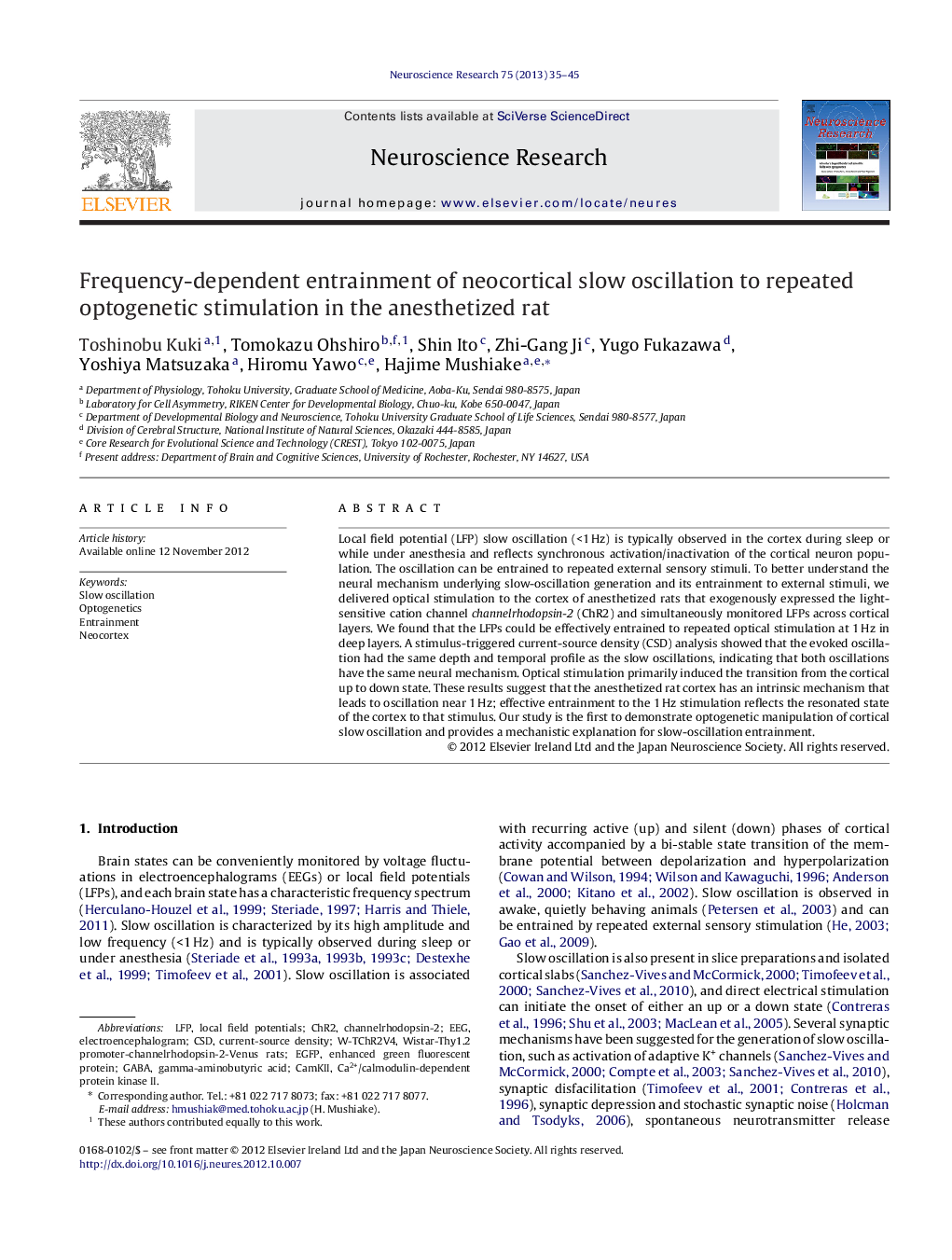| Article ID | Journal | Published Year | Pages | File Type |
|---|---|---|---|---|
| 4351524 | Neuroscience Research | 2013 | 11 Pages |
Local field potential (LFP) slow oscillation (<1 Hz) is typically observed in the cortex during sleep or while under anesthesia and reflects synchronous activation/inactivation of the cortical neuron population. The oscillation can be entrained to repeated external sensory stimuli. To better understand the neural mechanism underlying slow-oscillation generation and its entrainment to external stimuli, we delivered optical stimulation to the cortex of anesthetized rats that exogenously expressed the light-sensitive cation channel channelrhodopsin-2 (ChR2) and simultaneously monitored LFPs across cortical layers. We found that the LFPs could be effectively entrained to repeated optical stimulation at 1 Hz in deep layers. A stimulus-triggered current-source density (CSD) analysis showed that the evoked oscillation had the same depth and temporal profile as the slow oscillations, indicating that both oscillations have the same neural mechanism. Optical stimulation primarily induced the transition from the cortical up to down state. These results suggest that the anesthetized rat cortex has an intrinsic mechanism that leads to oscillation near 1 Hz; effective entrainment to the 1 Hz stimulation reflects the resonated state of the cortex to that stimulus. Our study is the first to demonstrate optogenetic manipulation of cortical slow oscillation and provides a mechanistic explanation for slow-oscillation entrainment.
► Cortical slow oscillation was optogenetically entrained to a 1 Hz optical stimulus. ► Induced oscillations had the same current profile as natural oscillations. ► Optical stimulation primarily induced a transition from the up to the down state. ► Entrainment reflects the resonated state of an intrinsic cortical rhythm near 1 Hz.
